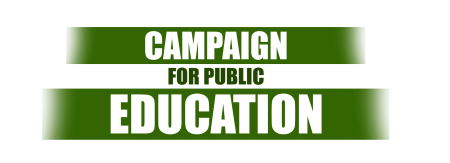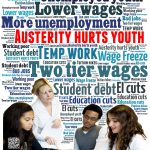Graduating students are IDLE NO MORE
 So why is it taking off now and not five or 10 years ago? A critical mass of educated young people.
So why is it taking off now and not five or 10 years ago? A critical mass of educated young people.
When she was in high school in Saskatoon, Ms. Lee’s history teacher was a woman named Sheelah McLean, one of the four founders of Idle No More. Together they embody one of the movement’s most intriguing aspects: It has been led and organized almost entirely by young, university-educated women. But Idle No More is also shaped by a collision of demographic and historic forces: a very young population, rising levels of income and education and a community that has suffered decades of injustice. It reads like a recipe for a resistance movement.
“One of the things I look at is the number of aboriginal students in university and college. In the early 1970s, the number was counted in the low hundreds. If you look now, you’ll find the number is around 30,000. It’s a staggering number, a wonderful indication of a major transformation,” said Ken Coates, Canada research chair in regional innovation at the University of Saskatchewan.
Prof. Coates describes Idle No More as part of a revolution of rising expectations. The number of aboriginal university graduates increased by a third between 2001 and 2006. Over that same period, incomes rose and employment grew. Forty-four per cent of those 25 to 64 now have some form of postsecondary credential. More and more young aboriginal people are connected to the mainstream economy, and more communities are finding some measure of prosperity through economic development. There’s a long way to go to achieve equality with the rest of Canada, but there are signs of progress.
“The whole balance in the first nations community is radically different than it was before,” Prof. Coates said. “They have companies, they have success, they have graduates. All these elements, which Canadians are not used to seeing, have made it so that first nations people are saying, ‘Why shouldn’t we aspire to more?’ ”
Ms. Lee is a fourth-year student in political philosophy at the University of Saskatchewan. She has been active in Idle No More since its first rally in a Saskatoon community centre, where she spoke to a humble gathering of 100 people. At the time, she thought it was no different than the other political activities she’d taken part in. The crowd was familiar, many of them veterans of the local activist scene, and there were no signs that this time was different. But within weeks, the movement started to take off.
Ms. Lee runs the Idle No More Facebook page, which she says reaches a million readers a week. It is one of the main communications hubs for the movement. She sees herself and the aboriginal friends she has made on campus as belonging to a new generation, one that will enjoy the benefits of university training, good jobs and an assurance about their place in the world. Like her, her friends are almost all the first of their family to go to university. They are determined to speak up against federal policies they see as wrongheaded and harmful to the environment. They are also aware of trying to live up to the expectations that come with their education.
“There’s a sense of duty that you have to fight to see the change you want,” Ms. Lee said. “It’s an interesting situation because it’s a tremendous amount of pressure, because you don’t want to fail, but it’s also empowering to realize that your ancestors and grandparents never had these opportunities and now you finally do.”
Tala Tootoosis, 30, a mother of three and a fourth-year social-work student in Saskatoon, said she feels a similar sense of duty, in her case to speak up for the protection of the Earth. She joined Idle No More thanks to her connection to another of the organizers, Nina Wilson. Ms. Wilson’s Facebook posts about the impact of governmental environment policies were persuasive, Ms. Tootoosis said.
“The raw energy behind this is young native people who are educated,” said Taiaiake Alfred, a political scientist at the University of Victoria. “It’s led by women, it’s a lot of younger people, it’s a lot of people who have no time for politics as usual and are committed to revitalizing their traditional pre-Indian Act forms of government.”
About two-thirds of aboriginals in college or university are female. These women are part of a new political class that has emerged as an alternative voice to the traditional first-nations leadership – the chief and band council system – which is often described as male-dominated. Only about 17 per cent of chiefs are women, according to a Canadian Press report last year.
Prof. Alfred said that education and urbanization have brought more young native leaders together in close proximity, while social media has allowed those networks to expand across the country and around the world, making converts of friends and family and those who aren’t as inclined to political activism.
Winona Wheeler is head of the native studies department at the University of Saskatchewan. She was born in 1958, two years before natives were granted Canadian citizenship.
“We grew up in a tumultuous period where we were just trying to get the world to recognize we existed,” Prof. Wheeler said. “My generation was the first to get into postsecondary in any numbers and we raised a generation of kids in that environment. … They’ve had more opportunities to see the options out there. They’ve been raised in an environment that gave them more critical thinking powers, and that’s significant.”
Aboriginal people make up about 3 per cent of the Canadian population, but their age structure is radically different from the rest of society. Aboriginal Canada is young. The rest of Canada is not. The median age of aboriginal Canadians is 27, compared to 40 for non-aboriginals. One in seven Canadians is over 65, while among aboriginals it’s just one in 20. And almost one in three aboriginals is under 15, about twice as high as the rest of Canada. As demographers Don Kerr and Rod Beaujot have argued, such a huge divergence in population structures has important implications. That difference is one reason why issues of broader public concern in Canada “are often completely out of line with the needs of Canada’s aboriginal peoples,” Professors Kerr and Beaujot said.
Prof. Wheeler said change for aboriginal people came rapidly in her lifetime, but the Idle No More generation hasn’t seen anything comparable. For 15 years, aboriginal leaders have tried to reform the system through the courts and through gradual policy adjustments. But government dragged its feet on issues such as land claims and modern treaties, Prof. Wheeler said. The Conservative government’s omnibus budget bill, which included many provisions on water and resource development that affect native lands, was the spark that ignited a new political awakening. Now it’s about getting to the table to negotiate on a nation-to-nation basis, she said.
“We have a lot of young people, teenagers and people in their 20s who want to see change, because change has been really slow in their generation,” she said. “Young people are pretty frustrated.”
Ms. Lee and her friends may be disheartened by the politics of the Conservative government, but they have been energized by the success of Idle No More. There’s something different about this movement, Ms. Lee said.
“More and more first-nations people are going to university and getting good jobs and starting to get in positions of power. A few decades ago, that was even less possible, and I think that has a lot to do with [the growth of the movement],” Ms. Lee said. “This time, I notice friends that I’ve never heard say anything political are talking about this. It’s a concept that hits home.”
Published under banner of:
What’s behind the explosion of native activism? Young people
JOE FRIESEN
DEMOGRAPHICS REPORTER — The Globe and Mail
Published
Last updated



